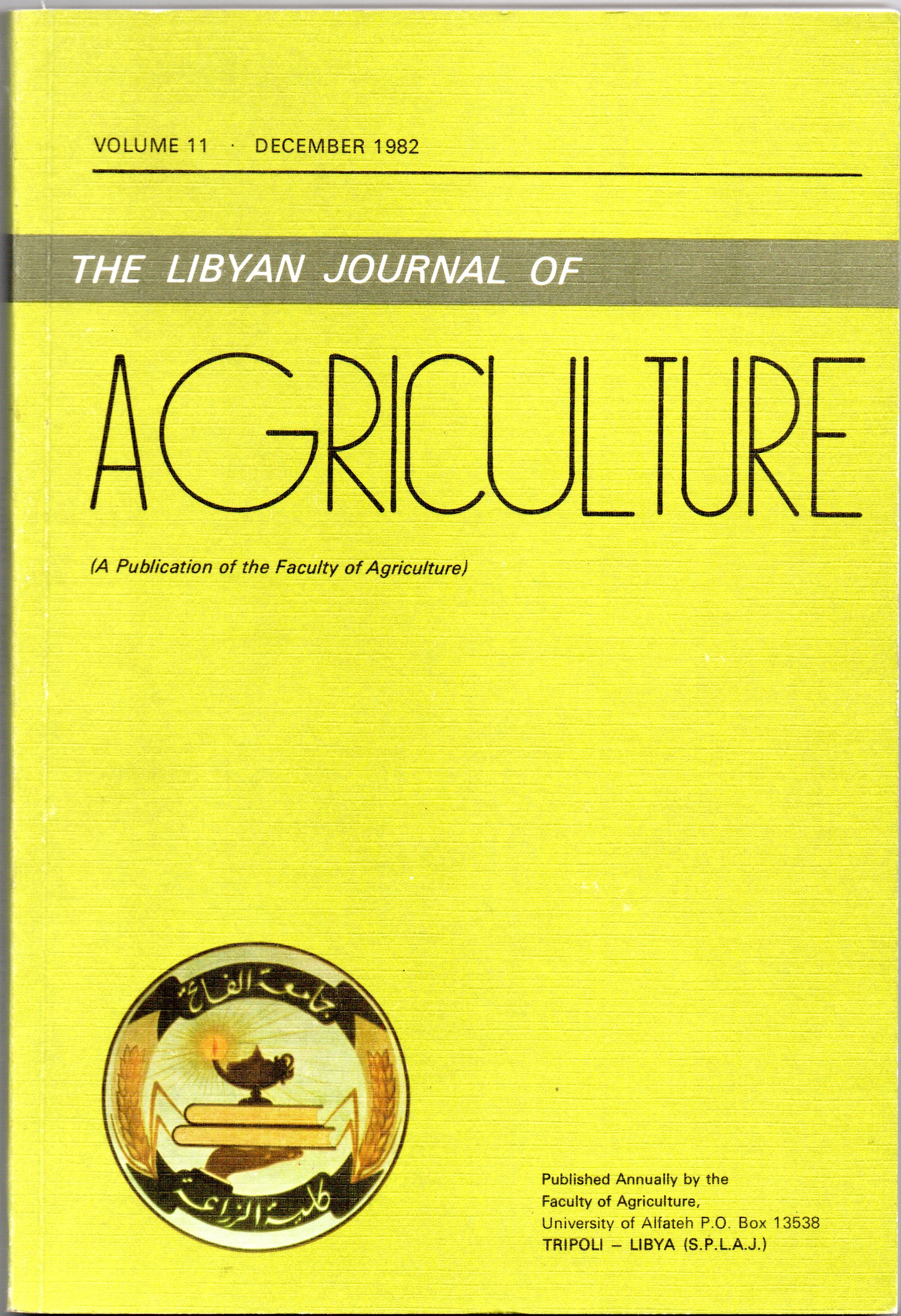Dryland Wheat Production in the Western Part of Libya II. Subsoiling and its Residual Effects
Main Article Content
Abstract
The effects of subsoiling during 1980-81 and its residual effects during 1981-82 on the yield of dryland wheal were studied on the sandy soils of Al-Fateh University Farm. Tripoli.
Significant response to subsoiling (50cm deep) was exhibited by plant characters like plant height, spikes per plant, grains and weight of grains per spike: total, grain and straw' yields, and 1000-grains weight as compared to rotary cultivator with spike-tooth rotor and a crumbier roller (20 cm deep), single-axle 7-disk plow (25 cm deep) and sweep (30cm deep) during both the seasons. The effect of tillage treatments on weed population was not significant.
Tillage was not repeated during the second year to observe the residual effects of previous year's tillage. The tillage expenses were saved and the results indicated that the yield increase was also maintained. This economized the wheat production. The experiments clearly indicated that subsoiling once every 2 to 3 years is a desirable practice to improve the yields of dryland wheat grown on sandy soils of the western part of Libya.

